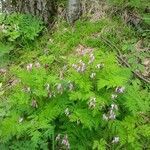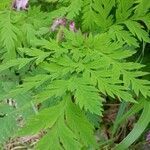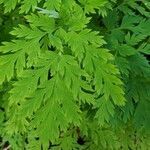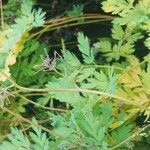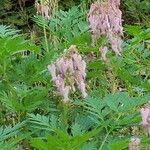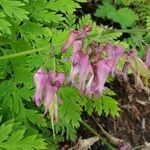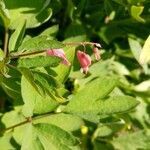Lvs and scapes from a short, stout, scaly rhizome, without bulblets; lvs eventually to 4 dm (petiole included), ternately dissected into lanceolate or oblong, coarsely toothed segments; scape 2–5 dm, bearing a mixed panicle of nodding pink fls; cor narrowly ovoid, 18–25 mm, cordate at base, the spurs short and rounded; tips of the outer pet divergent, 5–6 mm; nectary-spurs virtually obsolete; 2n=16. Dry or moist mt. woods; chiefly s. Appalachian sp., from N.C. and Tenn. to W.Va., Pa., N.J., and s. and w. N.Y. May–Aug.
